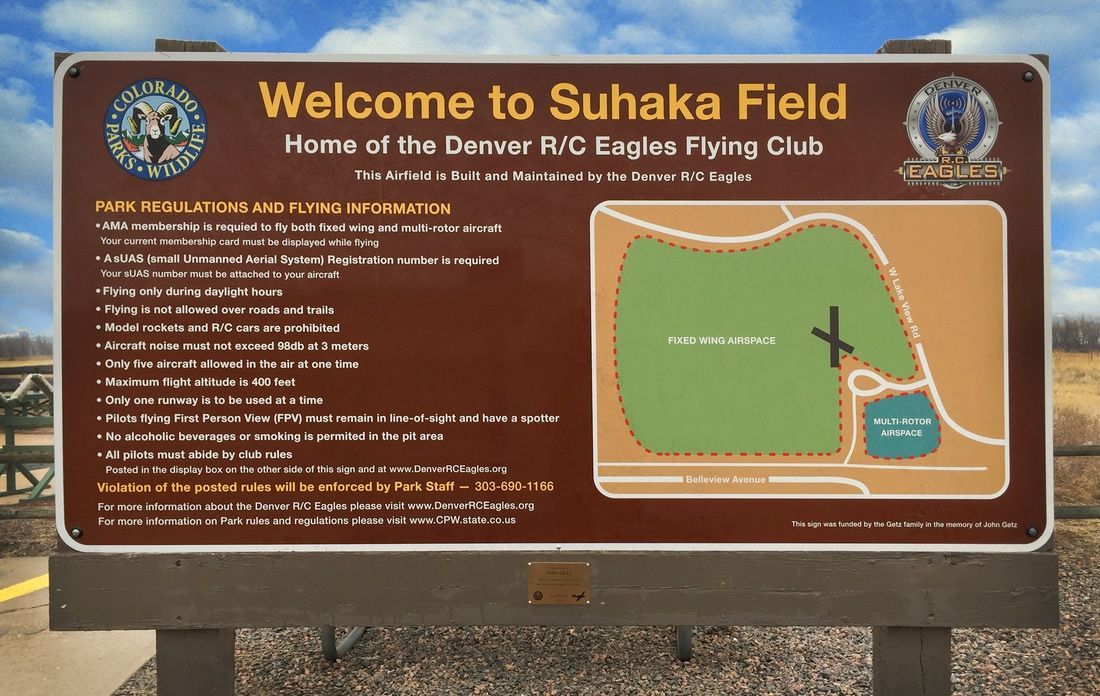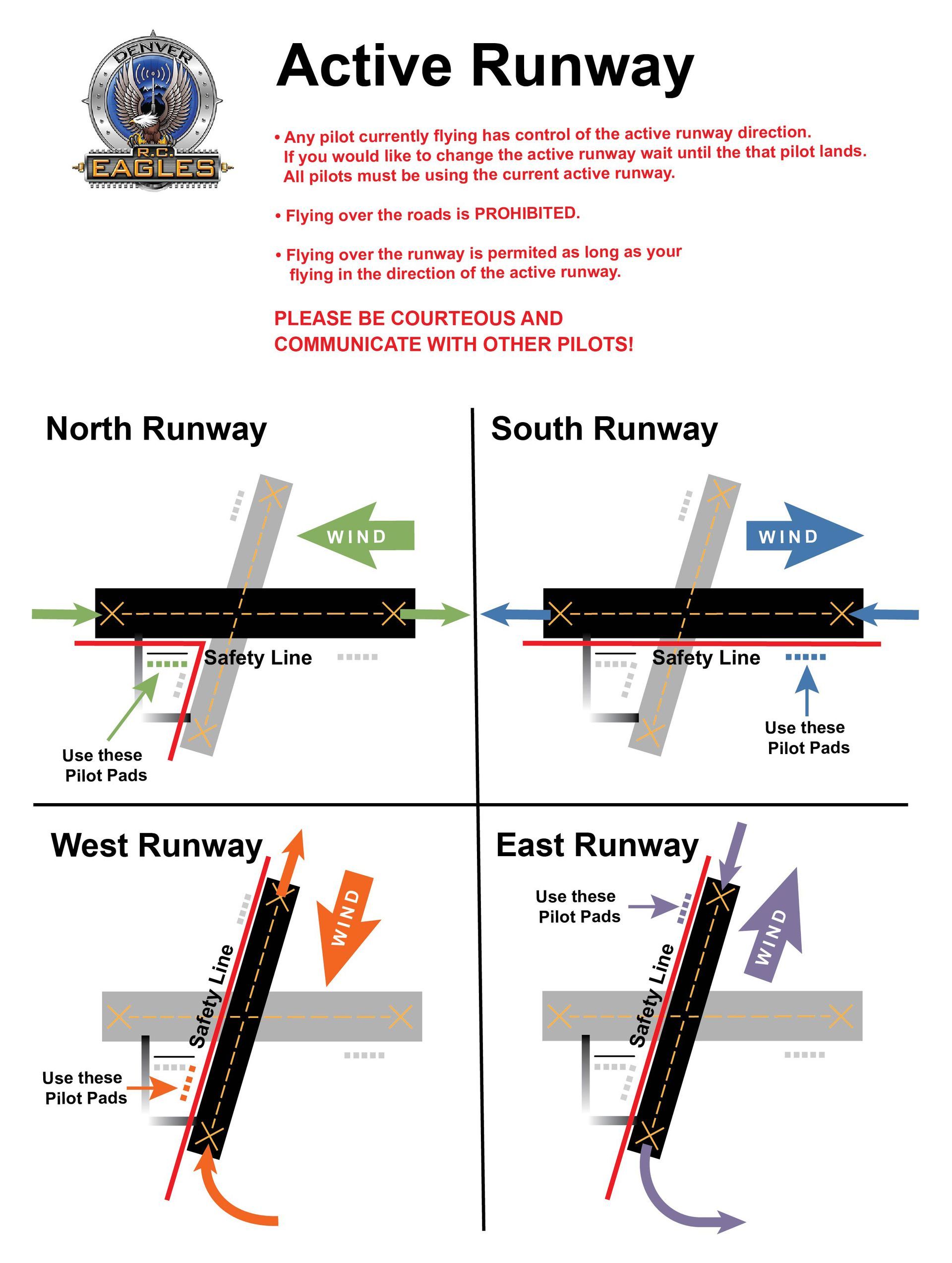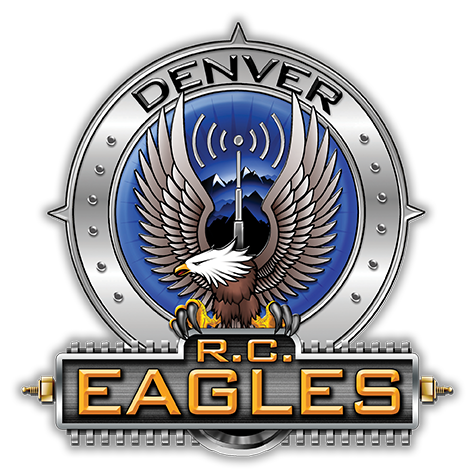Safety Information & Rules
Safety is our first priority!
PLEASE - Stay alert, exercise good judgment, make others aware of potential safety hazards, be polite and considerate of others, and let’s keep everyone safe!


Fixed Wing Rules
1. Flying is not permitted over roads and trails.
2. Model rockets, kites and RC cars/trucks are not permitted.
3. No flying before 7:30 A.M. except for electric airplanes and rotorcraft.
4. Maximum flying altitude is 400 feet, due to proximity of Centennial Airport.
5. Maximum noise limit is 98 db measured at 3 meters.
6. For non 2.4 GHz radios, place some form of identification in the appropriate frequency control box channel slot in the Fixed Wing Pit Area, before turning on your transmitter. Only one identification card is permitted in each slot. If another pilot is waiting for your channel, limit your use to 15 minutes. Remove your card when finished flying.
7. When necessary, the President or Maintenance Officer may close the field for flying while construction, maintenance, or repairs are in progress.
8. No taxiing is permitted in the pit area. Aircraft with engines running must be restrained by a wing restraint table, a tail hook, your helper, or by your hand.
9. Only pilots and helpers are allowed in the pits and on the pilot pads.
10. Inexperienced pilots must be supervised by someone able to maintain control of the aircraft at all times.
11. No consumption of tobacco, alcoholic beverages, or Marijuana allowed in the pit area or on the flight line.
12. All pilots must display a current Academy of Model Aeronautics (AMA) membership card while flying.
13. Maximum of five (5) aircraft in the primary flying area.
14. Flying is not permitted over pits, spectator or parking areas. Pilots will not fly at the pits or spectator area in a manner that could endanger spectators or pilots. Runways are to be used only for takeoffs, landings, and touch & goes.
15. Only one runway is to be used at any given time. All takeoffs and landings will be in the same direction. In the event of a crosswind, the flying majority will govern which is to be the "active" runway. If the wind changes direction during flight, pilots waiting to taxi or takeoff must wait until flying pilots have relocated to the new active runway. Pilots will stand on concrete pads when flying.
16. All flying is restricted to north of the east-west runway and west of the of the north-south runway except for takeoffs and landings. Flying over Belleview Avenue is not allowed (see map on sign board).
17. Hand launching of all aircraft will be made from the active runway.
18. Right of way rules ranked by priority: Full-scale aircraft (alert other pilots to location of full-scale aircraft), dead-stick landings (announce), normal landings (announce to avoid aircraft traffic problems), takeoffs (announce-request permission from pilots in the air to taxi on to the active runway), and taxiing (use taxiways and inactive runways whenever possible).
19. Helicopter flying rules are posted separately at the helicopter flying area.
Rotary Wing Rules
(Reflecting only those rules that are special to Rotary Wing Field Area)
9. All pilots and spectators must enter and leave the area on designated pathways.
10. Only pilots and helpers are allowed at the setup table and in the take off areas. Spectators must remain to the north of the takeoff area and flight zones.
11. All pilots must display a current Academy of Model Aeronautics (AMA) membership card when flying. Non-AMA members should contact a club member for a temporary Visitor Pass.
12. Only rotary-wing aircraft may be flown in the rotary-wing area.
13. Inexperienced pilots must be supervised by someone able to maintain control of the aircraft at all times.
14. There are two flight zones: to the east and to the south. No more than one helicopter or multi-rotor craft may be flown in a flight zone except: Two micro-helicopters or multi-rotor craft may be flown at the same time in a flight zone provided the pilots mutually agree prior to takeoff.
15. A pilot who is ready to fly must ask any pilot already in flight for permission to take off. The pilot who is already in flight has the prerogative of denying said request to allow completion of his/her flight.
16. No aircraft may come any closer than 10 yards to roads, the setup table, or the spectator area. Please respect the safety of people walking on the path through the flight zone.
17. No aircraft may fly further west than the marked boundary. Absolutely no rotary wing flying permitted in the fixed wing runway approach area.
